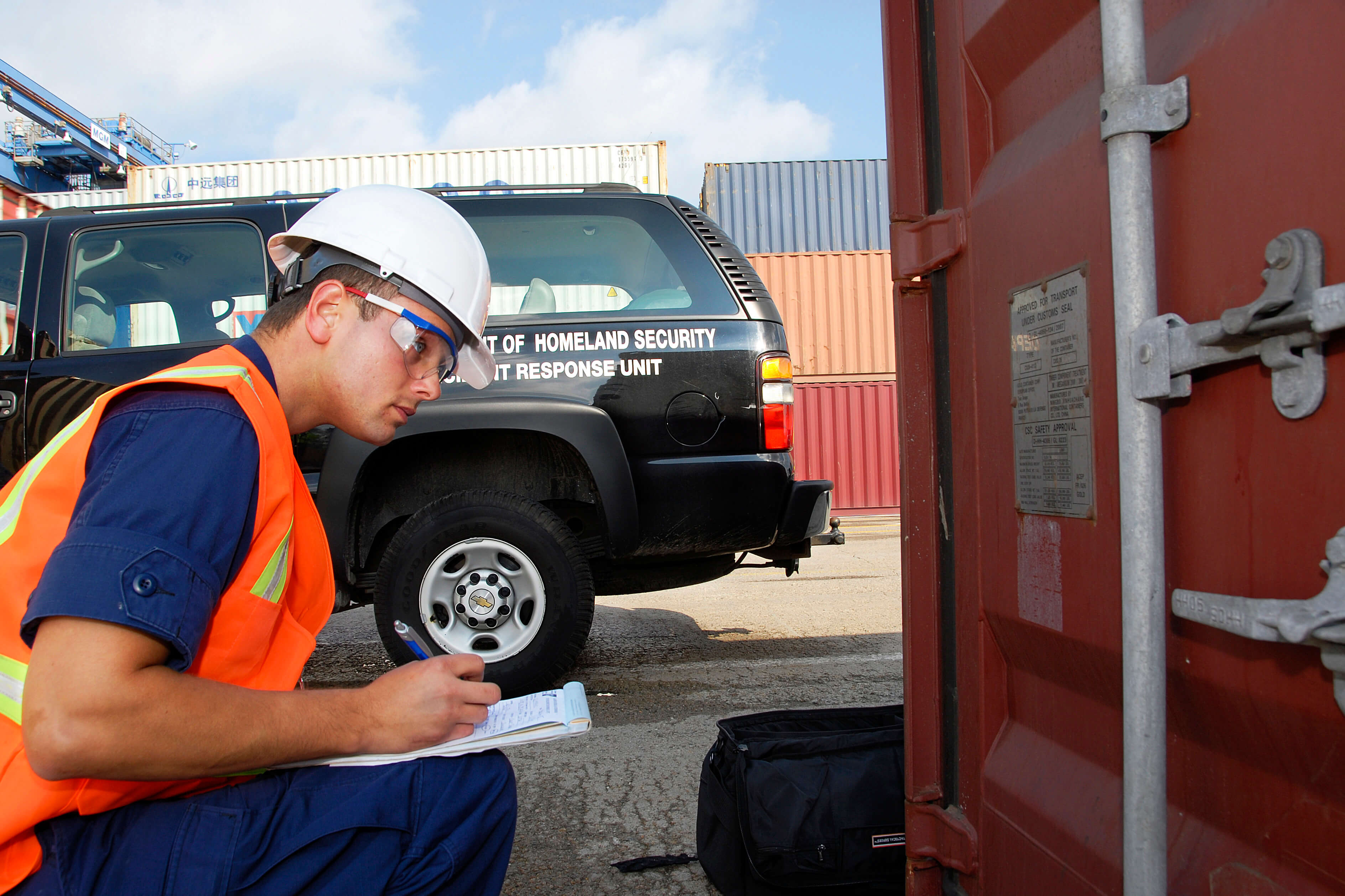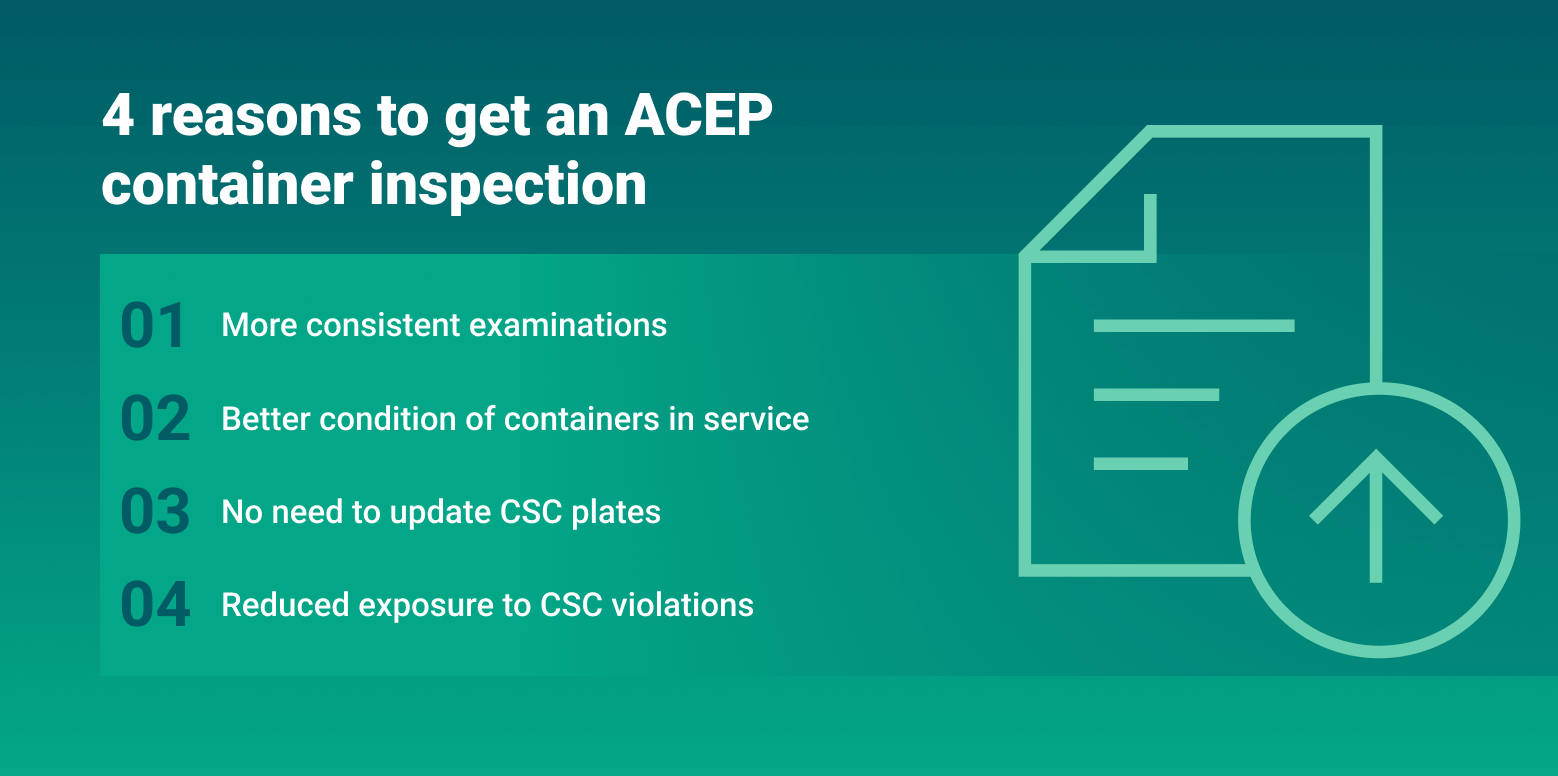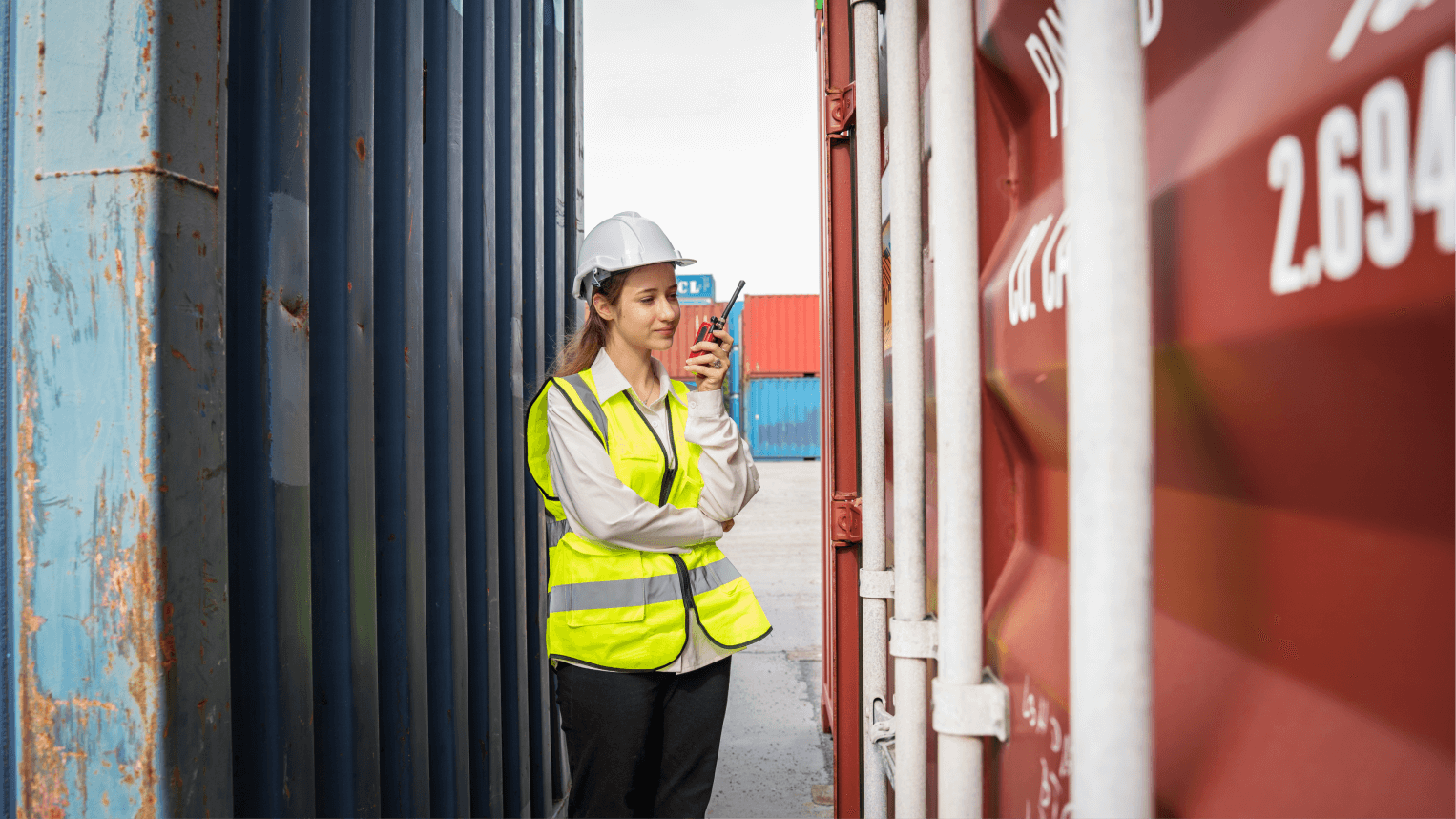Have you come across the term ACEP container inspection and wondered how it’s different from a usual container check? Then you’ve reached the perfect place. Get the lowdown on this type of container inspection and why it’s so important for your business, right here.
Keeping your container in good condition to carry your cargo safely is a must. But did you know that keeping your containers in top condition can also help save human lives? Yes, you read that right!
Suppose you’re transporting hazardous goods say certain liquids or gases, which if someone inhales or comes into contact with can be poisonous. In this scenario, one reason your container needs to be inspected is to ensure that these goods stay secured inside the box. The other reason an inspection is crucial is to detect any leaks or holes that can affect goods during transit. These leaks will end up putting the handler of your container at a health risk. And if it’s a flammable material you’ll be putting the entire crew of a ship in danger – yikes!
To stop such unfortunate situations from unfolding and to keep cargo safe, an ACEP container inspection is a must.
Now to get this inspection done you need to have a full understanding of what it is exactly. Our next section will uncover all the details of an ACEP container inspection.
What is an ACEP container inspection?
ACEP stands for Approved Continuous Examination Programme. And it’s the container owner’s responsibility to get the ACEP inspection done at regular intervals to check for defects and potential dangers. The responsibility of the inspection is transferred to the lessee if the container is leased.
To ensure the safety of containers, the IMO (International Maritime Organization) enforced the ACEP through the CSC (Convention for Safe Containers of 1972) to regularly inspect the containers. The regulations for ACEP are listed in the CSC. They are enforced by the IMO sub-committee on Dangerous Goods, Solid Cargoes, and Containers (DSC), which is under the authority of the Maritime Safety Committee.
If you own a container or are a lessee, make sure this shipping container inspection is something that you do periodically.
But, if you’re still on the fence about this inspection being inconvenient or time-consuming for you, we can give you our top 4 reasons below that are sure to change your mind.
Top 4 reasons why you need an ACEP container inspection
1) The examination periods are frequent and consistent and are carried out efficiently without wastage of time. Also, the ACEP online database is automatically updated and will notify you about the date of the upcoming inspection without you having to lift a finger.
2) Better state of operational containers. Since ACEP inspections occur frequently, minor damages on your box can be fixed sooner instead of waiting for a longer period.
3) No need to update CSC plates. Under ACEP, the CSC plate does not have to be updated immediately as the ACEP ID doesn’t change after every examination and the CSC plate remains valid.
4) Lower risk of CSC violations. Since the CSC plate remains valid, you don’t have to worry about a penalty due to the violation of CSC.
The need for regular inspections also depends on the specific container type, as each type is designed to handle different cargo and conditions.
Pretty convenient right? So be sure to not skip on out this important inspection.
What happens during the ACEP inspection?
With these top four points in mind let’s dive into understanding what exactly happens during an ACEP container inspection for your better understanding.
What you need to do during the ACEP inspection:
The surveyor’s duty during the ACEP inspection:
For an in-depth understanding of what needs to be done from your end during the inspection and what the surveyor should be doing during the inspection, click right here for our expert team’s advice. |
What follows after the inspection?
If the inspector, post the examination, finds that your container has no defects and doesn’t pose any threats. He/she will document a written statement stating the same.
After this you being the owner or the lessee of the container are notified of the following information:
|
The info you’ll get after the ACEP inspection
After going through all this information, you now have the duty of affixing the date of examination on or next to the CSC plate. If you require more information on what you will receive after the inspection and what you need to do following that then let our expert team help you out.
|
But, if the inspector finds that your container is defective, they will state whether the container is unsafe for loading, or if it can still be moved to a different destination as an empty container. You will be fully informed of the disadvantages in this case.
Take note: You being the owner of the container need to retain all the documents and make them available for the next inspection whenever it happens. At any point, if your container is leased to a different owner, the documents need to be copied and handed over to the respective individuals. A system of maintaining records needs to be in place to save the Container ID, date of examination, Inspector’s details, name and location of the examination, and the results.
How Container xChange can help you with container inspections
Speaking of container surveyors. If you want one for your ACEP inspection but have no idea where to look, we have some good news for you. You can get access to certified surveyors in 4000+ locations on the xChange platform. Here’s how:
Become a member of our platform, where you can lease a box at competitive prices with zero hidden fees. You can get your containers from vetted members who are certified and negotiate prices. We offer full market transparency to find deals that suit you.
You can then book an ACEP inspection by simply clicking on the ‘Request Survey’ button and connecting with surveyors in different locations globally. Your containers will be inspected by our vast network of knowledgeable surveyors for a reasonable fee.
It is that simple! So, if you are in need of an ACEP container inspection you’re just a few clicks away from securing a surveyor to carry out this essential container examination.
ACEP container inspection vs Periodic Examination Scheme (PES)
While we’re on the subject of inspections we want to also let you in on the PES inspection as well. This should be carried out along with the ACEP inspection.
Both these inspections are very similar except for the frequency with which they are carried out. If the container is under PES. Then the first examination takes place 5 years after the manufacture date and then every 30 months. Under ACEP, apart from the regular inspection every 5 years. Checks also happen during a major repair, refurbishment, or when the container is hired for shipping various goods.
But keep in mind that your container should not go without inspection for more than 30 months.
CSC safety examinations and ACEP number
Since we’ve spoken so much about the CSC (Convention for Safe Containers). Let’s clear out what is the difference between the CSC safety examination and the ACEP number.
A CSC plate guarantees that containers are constructed correctly and are regularly inspected to keep workers as safe as possible. The CSC inspection must conduct its initial safety evaluation no later than five years from the date of production. Thereafter, re-examinations must take place at least once every 30 months. The goal of this inspection is to see whether there is any damage to the container that could endanger a person.
Now coming to the ACEP number, the ACEP identification numbers are given out by National Administrators. These are marked as the ACEP scheme number. It has a bunch of details listed proving that your container is seaworthy. And you, the owner regularly get inspections done for your container.
Manage your container inspections with ease on Container xChange
By now you’re well-equipped with information on the ACEP inspection. And how important it is, so we suggest if you haven’t already, you should get one done at the earliest.
If we take a look at the scenario above about transporting hazardous goods. To ensure that such a disastrous event doesn’t take place you need to be on top of the inspection game. The ACEP inspection will need to be done carefully to eradicate any possibility of there being any holes or leaks to protect human lives and the cargo. With xChange, you can assure no mishaps like the one above take place.
How? Well, you will just need to get onto our platform and lease a box from 10,000+ containers in 2,500 locations worldwide. Get your box from 1000+ certified suppliers whom you can make deals with directly. And thanks to our complete market price transparency you can compare prices and terms and select the best offers. And get competitive rates for leasing which are difficult to find outside of the platform with zero hidden fees.
After this, you can then book the ACEP inspection by simply clicking on the ‘Request Survey’ button and connecting with surveyors in 4000+ locations.
So go on and visit our website to secure qualified surveyors at reasonable fees and get those inspections done periodically. Lend a helping hand in keeping not just your goods safe but also ensuring the safety of human life.
ACEP container inspection: Common FAQS
What is an ACEP CSC plate?
A CSC plate ensures containers are built safely and inspected consistently to keep workers as safe as possible.
What is a container inspection?
An inspection is carried out to ensure the container is suitable for safe international travel.
What is ACEP in containers?
ACEP stands for Approved Continuous Examination Programme. And it is the owner's responsibility to get the ACEP inspection done at regular intervals to check for defects and potential dangers.





